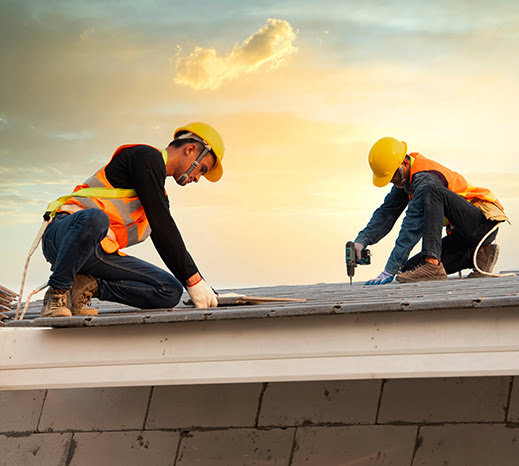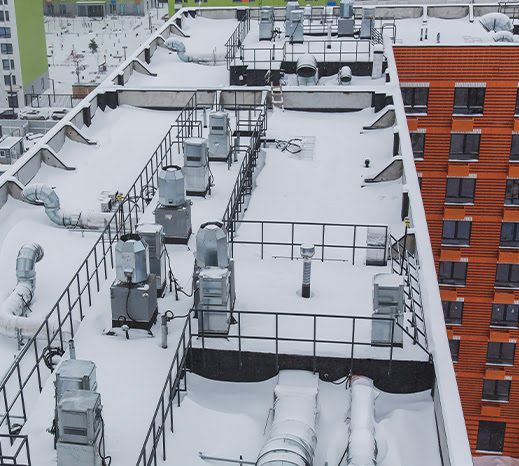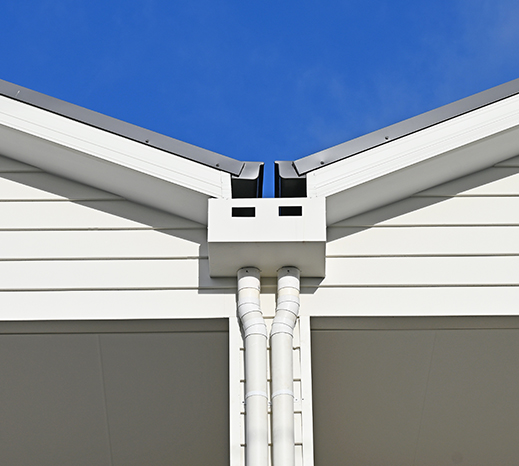Learn about different types of commercial roofing materials from experts at Tidewater Roofing! We cover tar or BUR, torch down, thermoplastic, and other common options so that you can learn all about the best route to take for your business.
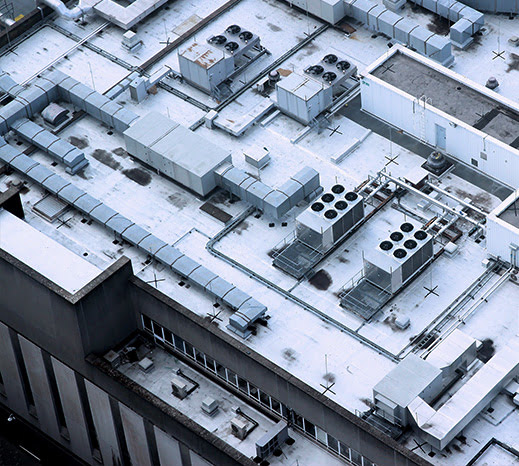
When you’re deciding what type of commercial roofing you’ll use, consult an expert. You want to make sure your selections will perform! There may even be some options new to the market in your area. With our list and knowledge, you’ll be able to choose the best route to take for your new business development or replacement.
Next Steps:
Table of Contents
- Types of Commercial Roofs & Materials
- Flat or Low-Sloped Roof
- Angled Roof
- Influential Factors
- Key Comparison Chart
- Informed Decision-Making
- FAQ
Types of Commercial Roofs & Materials
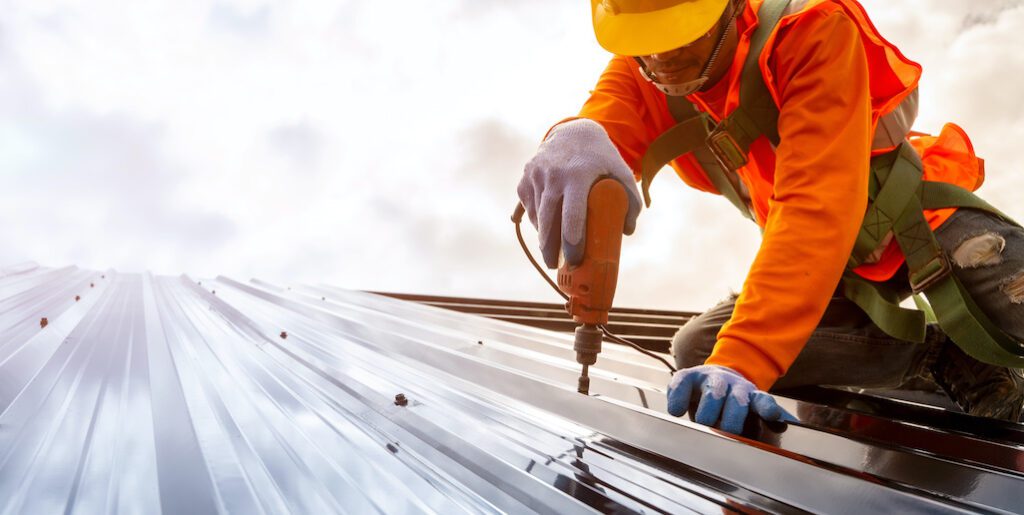
A commercial roof protects the structure, as well as what’s contained underneath, from the elements. Assets, employees, and customers all depend on roofing that works! This makes the roof of any commercial building one of the most important investments a business can make.
Given that there are many different styles of buildings, there are also different types of commercial roofs. The materials you can use depend on whether you have a flat, low-sloped, or angled roof.
Flat or Low-Sloped Roofs
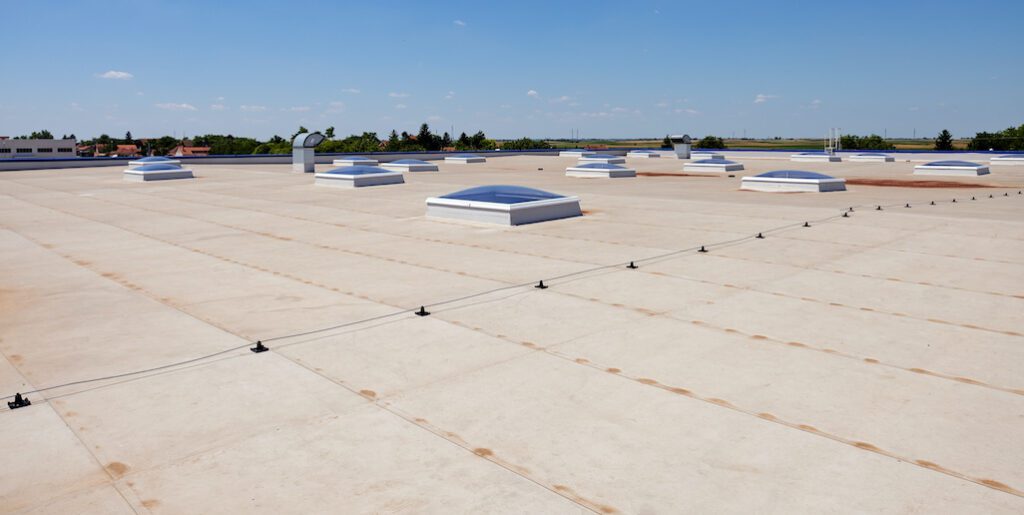
Many commercial and industrial buildings are structured with flat or nearly flat roofs. This design gives space for equipment to rest, such as AC or an exhaust system, and is more cost-effective than building an angled roof on a large building. Flat roofs are also safer for access on large structures.
But a flat roof requires protective material that will prevent water and weather from getting inside. Let’s explore the types of roofing materials common for commercial buildings with flat or low-sloped roofs.
Tar or BUR Roofing
Tar-and-gravel roofing, often known as “BUR” or “built-up roofing,” is one of the most popular commercial roofing solutions. Designed for flat roofs, multiple layers of waterproof material are frequently alternated with hot tar and a mineral aggregate surface layer.
BUR roofing can be installed with any number of layers. Depending on the number of layers recommended for your application, this style of roof can also provide cost savings. But it’s important not to sacrifice protection for pricing, as this can lead to more expensive troubles down the road.
If your business is in need of a low-slope roofing solution, this may be the best option.
Torch Down Roofing
Also known as torch-on roofing, torch down roofing uses a flame (from a propane torch) to fix and adhere roof layers. Layers of asphalt membrane (known as bitumen) are applied to the roofing deck to ensure protection and stability.
Modified bitumen roofing is simple to maintain, but it does require a yearly inspection to determine its condition. This style of roofing is highly long-lasting and is best suited for commercial buildings with heavy foot traffic on the roof.
Thermoset Roof Membrane
This is a versatile, long-lasting, and almost maintenance-free commercial roofing also known as EPDM (ethylene propylene diene terpolymer).
It offers high resistance to ultraviolet light as well as ozone and is made primarily from a rubber material. Available in both black and white, this type of roofing comes in a broad variety of widths, ranging from 7.5 feet to 50 feet, as well as thicknesses of 45 or 60 mm.
EPDM can be installed ballasted, mechanically fastened, or fully glued in the seams of the roofing system sealed with liquid adhesives or specialty tape that is formulated for the material.
Thermoplastic Roof Membrane
Thermoplastic roof membrane includes TPO (thermoplastic polyolefin) and PVC (polyvinyl chloride).
This type of commercial roofing is best suited for buildings occupied by oil-emitting businesses such as restaurants. It’s lightweight and resistant to UV light, chemicals, and oil. It can also withstand high temperatures, fire, and wind.
Angled Roof
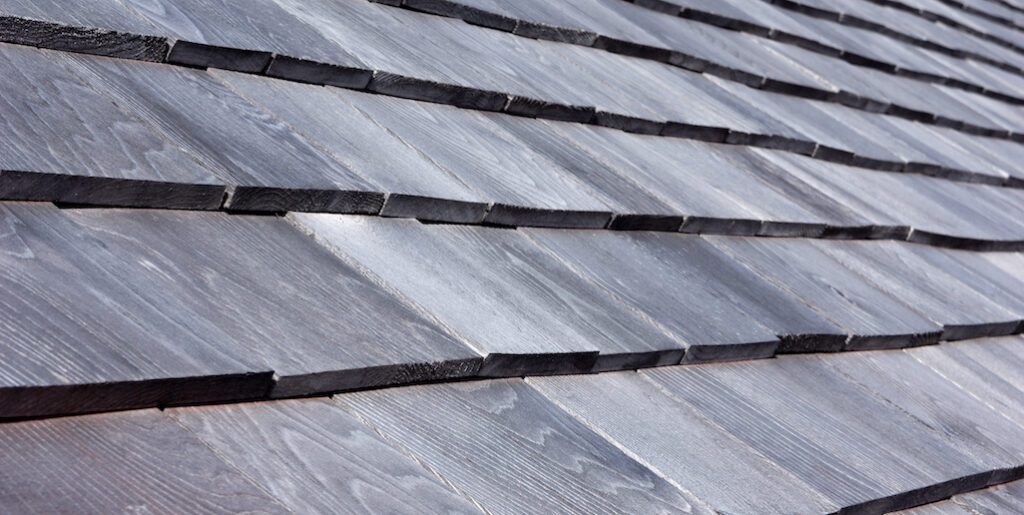
Not every commercial roof is low-sloped or flat, which means for some businesses, shingles are an appropriate choice of roofing material. Shingles are not designed to hold still water, which makes them a very poor choice for flat roofs.
Roof pitch describes the angle or steepness of a roof. Your commercial roof should have a roof pitch of at least 2:12 if you plan on installing shingles. This means that for every 12 horizontal units out, there is a drop of 2 units vertically.
Measuring roof pitch can be difficult without the proper equipment and safety knowledge. Leave it to a commercial roofing contractor! Tidewater Roofing can assess your commercial building and let you know if shingles are an available option.
Asphalt Roof Shingles
Asphalt shingles are made by coating a fiberglass or organic base with asphalt and applying mineral granules to the surface. Lightweight asphalt shingles are a popular roofing material for commercial buildings because they are relatively inexpensive and easy to install. Asphalt shingles are also available in a variety of colors and styles, so you can choose a roof that best matches the look of your building.
There are 3 main types of asphalt shingles:
- 3-tab asphalt shingles, which are the cheapest but also the least durable. These shingles are a single layer in thickness and are least able to withstand harsh weather.
- Architectural shingles, also called dimensional or laminated shingles, are thicker than 3-tab and provide a more pleasing aesthetic.
- Luxury shingles are the highest-quality asphalt shingles. These are more durable and have an aesthetic more similar to wood or slate.
Rubber Roof Shingles
Rubber roofing is a durable and weather-resistant roofing material that is ideal for commercial buildings in areas with extreme weather conditions. Rubber roofing is also eco-friendly, as it is made from recycled tires.
Installations with rubber shingles are more expensive than asphalt, but not as expensive as other shingle types. Hampton Roads sees its share of storms, so talk to your roofer to see if this is a durable option for your sloped roof.
Metal Roofing
For buildings with sloped roofs, metal roofing is one of the most popular commercial roofing options. Metal roofing is available in a range of forms, including metal tile sheets, corrugated galvanized steel, stainless steel, aluminum, copper, and tin. Aluminum, zinc, and silicon-coated steel aggregates are also available.
Metal roofing is frequently coated to protect it from corrosion and to maintain its long-term resilience in the face of adverse weather. Metal roofing is incredibly durable with the right maintenance and care.
Other Types of Shingles
If the aesthetic of your roof is important to you and your business, there are several shingle options available. Some shingle types such as slate and clay are quite heavy, and may not be appropriate for your roof or structure.
If your commercial space has a sloped roof our roofing specialists can let you know about all types of shingles available. Here are some common types:
- Wood shingles or shakes
- Slate shingles
- Clay shingles
- Composite shingles
- Solar shingles
Influential Factors
When making your final selection for roofing material, there are several influential factors that come into play including:
Costs
Cost is one of the main sources of concern when considering a new roof, whether a replacement or new construction. As mentioned previously, going with a low-sloped or flat roof in the initial design will be the most cost-effective for your business. But, if you have an angled roof, asphalt shingles are the most cost-effective for replacing or installing a roof.
Climate
Extreme weather conditions such as heavy rainfall, snow, or intense heat can all impact the performance and lifespan of your roof. And it’s important to note that in Virginia, our extreme weather conditions come in the form of severe snowfalls or frequent storms.
With this information, it’s important to go for materials that have high wind and impact resistance such as architectural or rubber shingles for angled roofs. Metal is also incredibly durable and resistant to a variety of harsh weather.
Aesthetics
Of course, you want the roof of your business to look nice—even if it’s not a space that customers would frequent. Aesthetic influential factors play a pivotal role in this decision.
Consider the visual harmony between your roofing choice and the overall architecture. Reflect on the color, texture, and style that align with your brand identity, creating an aesthetic appeal that not only protects but also enhances the visual impact of your business premises.
Key Comparison Chart
Below we provide a quick overview of various roofing materials commonly used in commercial settings. Keep in mind that the actual costs, durability, and maintenance can vary based on factors like square footage, climate, and specific product variations within each material type.
| Roofing Material | Cost | Durability | Maintenance |
| TPO | Moderate | High | Low |
| PVC | Moderate | High | Low |
| EPDM | Moderate | Moderate | Moderate |
| BUR | Low-Moderate | High | High |
| Metal | High | High | Low |
| Torch Down | Moderate | Moderate | Moderate |
| Shingles | Low-Moderate | Low-Moderate | Low |
Informed Decision-Making
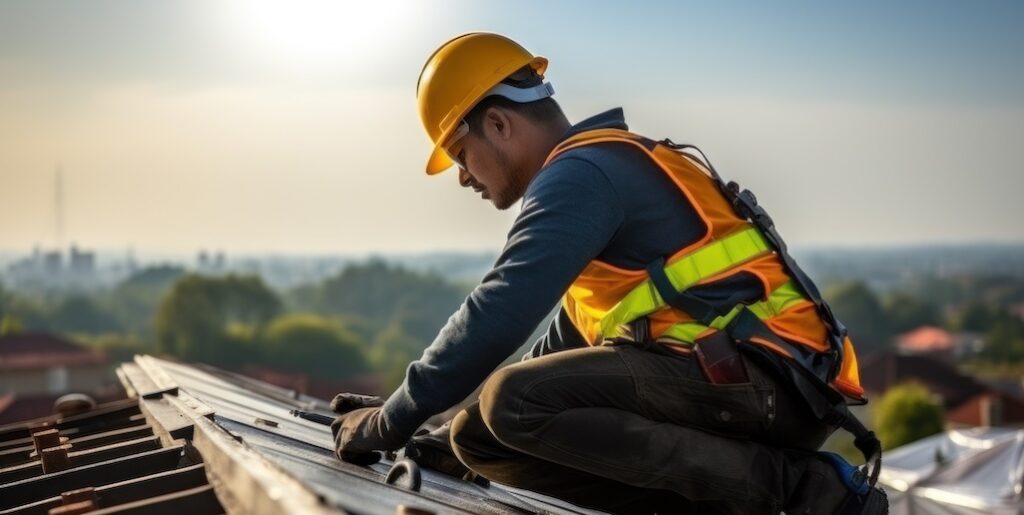
If it’s time for a roof replacement, you probably want to know what your options are. The installation process and costs are also important. Give Tidewater Roofing a call. Our commercial roofing experts can take a look at your structure and let you know what roofing materials will work with your space.
Frequently Asks Questions about Commercial Roofing
What is the lifespan of a typical commercial roof?
The lifespan of a commercial roof depends on various factors, such as the type of material used, climate, and maintenance. Generally, commercial roofs can last between 15 to 50 years.
What maintenance should I perform to keep a commercial roof in good shape?
There are several pieces of maintenance you should perform to get the longest life possible out of your roof and prevent large roof repairs from being needed. This includes:
- Routine inspections from professionals
- Check for leaks on the top floor of the building
- Inspect for damage after severe weather
- Keep gutters clean
What signs indicate I need to replace my roof?
There are some signs to keep watch for if you’re worried about needing a roof replacement including:
- Water stains on ceilings
- Discoloration of bubbling of paint
- Mold or mildew growth
- Noticeable drips or water pooling
What are the most common roofing materials?
Common commercial roofing materials include thermostat roof membrane, asphalt shingles, rubber shingles, metal roofing, and BUR. Each material has its own advantages and considerations.
How much does a new roof cost?
There are several factors that go into calculating the cost of a new roof including materials, size of the roof, labor, and the structure of the roof itself. Make sure to contact Tidewater Roofing for an assessment and quote on your new residential roof.

